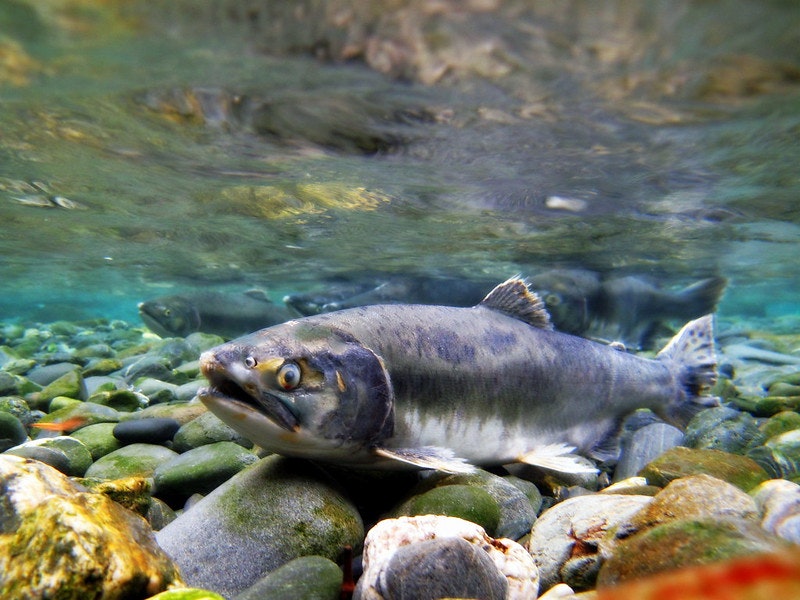
These earbuds punch way above their weight.
One of life's little pleasures is listening to music in such a way that you truly "hear" it. By that I mean you can hear the separation between the instruments or voices to allow all the subtlety to come through. When that happens, you hear things in songs you might never have heard before…even though you've listened to that piece of music thousands of times.
Also: These $26 earbuds sound better than I expected, and I'm an audiophile
Generally, such listening pleasure is associated (at least in my book) with vinyl. When music is straight-up analog, the lack of compression can create space and fidelity that digital simply cannot match. But when you do find a digital device that offers up some semblance of audio quality, it can be transformative.
I'm not saying this $79 pair of earbuds can compete with my vinyl setup. However, the EarFun Air Pro 3 earbuds certainly do an impressive job. When I received the headphones, I assumed they would sound like every pair of earbuds I've tested to date. But instead, I was pleasantly surprised.
ZDNET Recommends
EarFun Air Pro 3 earbuds
These inexpensive earbuds will have you hearing your music in ways to delight and wow you.
View at Amazon
Instead of a flat, overly-produced, bass or midrange-heavy sound, these earbuds produced a delicate balance between bass, mid, and treble that suited many different types of music. I put the EarFun through my usual test of classical, vocal, musical theatre, rock, and metal to see how they'd perform. The song list was as follows:
- VOCES8 - Angus Dei
- Mozart - Piano Concerto 23
- Band-Maid - Before Yesterday
- Anthem - From the musical Chess
- Rush - Tom Sawyer
- Devin Townsend - Kingdom
I was very much impressed with how these sub-80-dollar headphones could handle that range of musical styles. Each piece of music felt fresh, alive, and exceptionally well-balanced. Rush's Tom Sawyer felt particularly agile coming through these headphones. It was an absolute joy hearing the separation between Geddy's bass, Alex's guitar, and Neil's drums.
Also: Best earbuds: Sony, Bose, Apple and more compared
Every song on my shortlist was a delight to hear through the EarFun Air Pro 3 headphones, making them sound as if they cost considerably more. But what's the secret behind the Air Pro 3 headphones?
The specs
Here are the specs for the EarFun Air Pro 3 headphones.
- Powered by the advanced Qualcomm QCC3071 chipset and Qualcomm aptX Adaptive Audio technology
- Premium 11mm wool composite dynamic drivers that deliver deep, moving bass, clear mids, and crisp highs.
- Qualcomm cVc 8.0 ENC with 6 environmental noise cancelling Mics with Qualcomm cVc 8.0 technology.
- Feature unique Hybrid ANC technology-QuietSmart 2.0 to eliminate environmental noise by up to 43dB.
- Multipoint Connection via Bluetooth 5.3
- Low 55ms latency
- 9 hours of playtime and up to 45 hours of extra charge from the compact USB-C wireless charging case
- Fast charging with a quick 10-minute charging provides 2 hours of playtime.
- EarFun App allows for firmware updates and sound customization with a 10-band equalizer.
- Includes three different sizes of silicone ear tips for a custom fit, a charging case, and a USB cable
I also did a quick call test and the EarFun earbuds performed quite well. I could hear the caller and they could hear me more clearly than when using my Pixel 7 Pro without earbuds.
The controls
Using the EarFun Air Pro 3 headphones is simple. Once you've inserted them and have selected your music of choice, you can do the following:
- Triple tap left earbud - previous track
- Single tap left earbud - volume down
- Triple tap right earbud - next track
- Single tap right earbud - volume up
- Tap and hold (2 seconds) left earbud - enable noise canceling
- Double tap left or right earbud - answer calls
- Tap and hold (2 seconds) left or right earbud - reject call
- Tap and hold (2 seconds) right earbud - enable voice assistant
The one thing I did not do was take these earphones out for a run. But judging from the fit, I'm thinking they probably won't withstand the jarring that happens when I'm zipping through the streets. On top of that, there's no mention of a waterproof rating, so I'm guessing these would definitely not withstand the amount of sweat I produce when I run.
Also: I replaced my Shokz with these bone conduction headphones for one key reason
However, for general listening, the EarFun Air Pro 3 earbuds offer outstanding performance for the price point. No, they aren't going to stand up to a pair of serious studio-quality headphones but for $79, you could do a whole lot worse.
Featured reviews
"sound" - Google News
August 31, 2023 at 10:22PM
https://ift.tt/Rd7lQMS
$80 noise-cancelling earbuds should not sound this good - ZDNet
"sound" - Google News
https://ift.tt/r3Z1S6a
Shoes Man Tutorial
Pos News Update
Meme Update
Korean Entertainment News
Japan News Update











